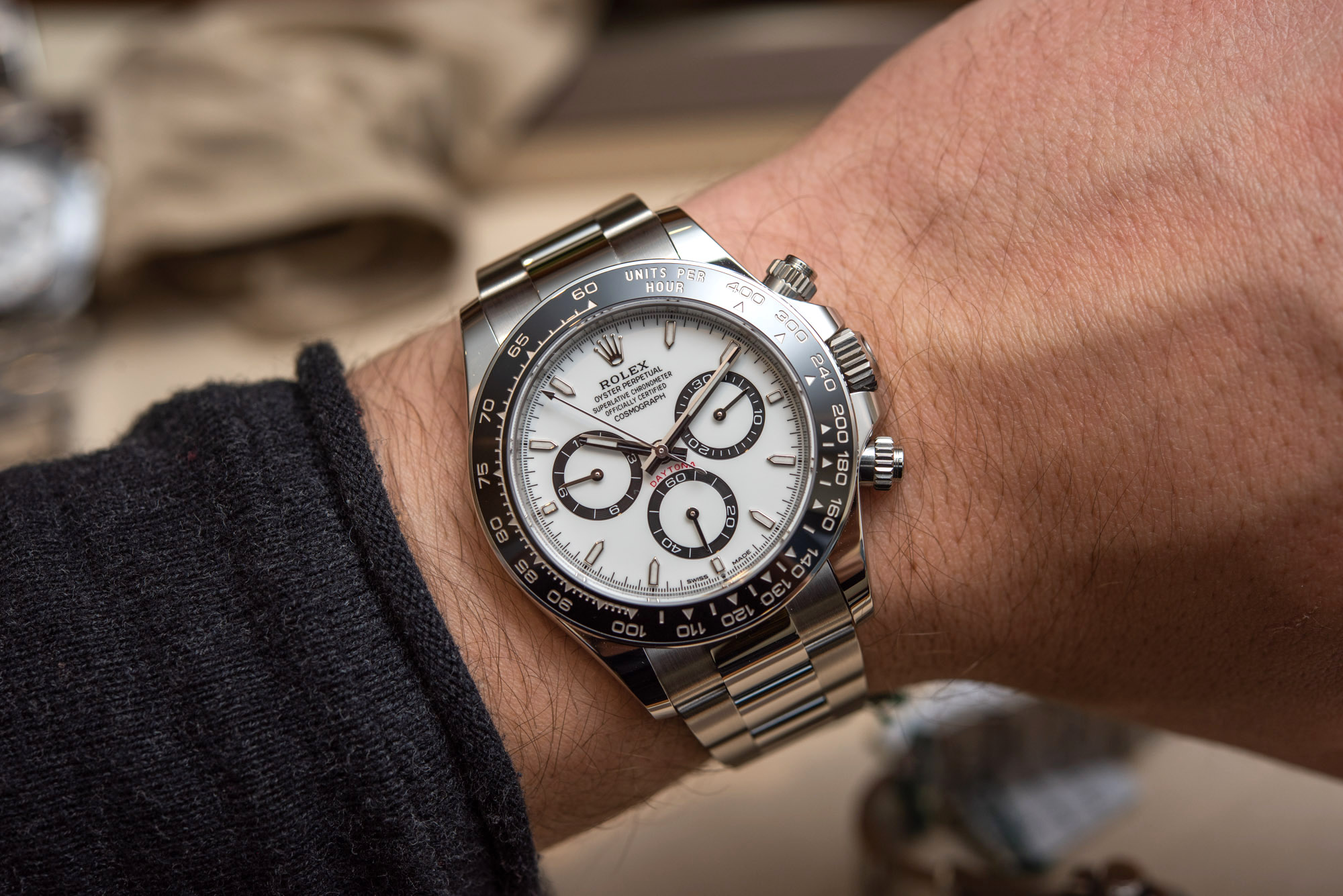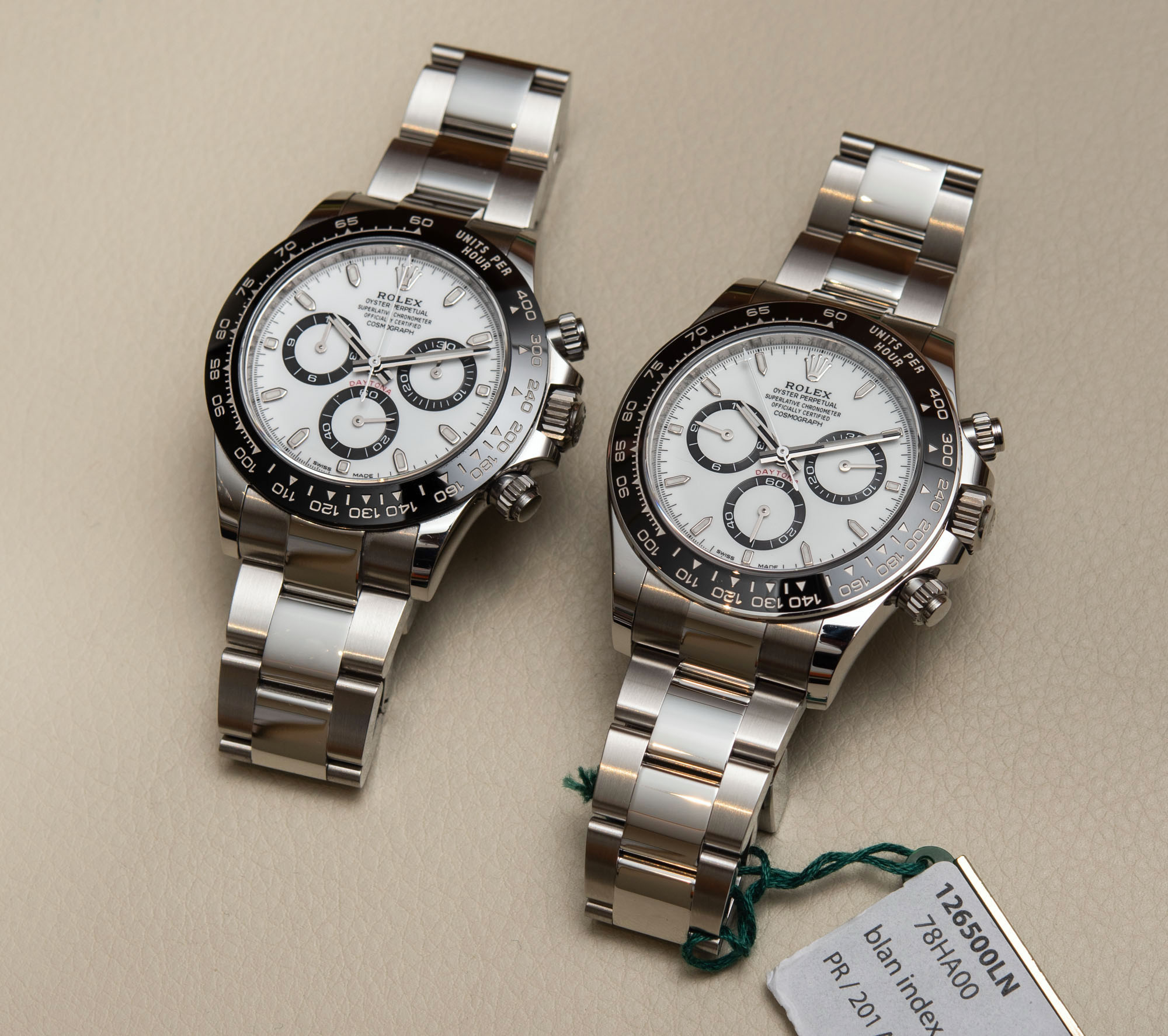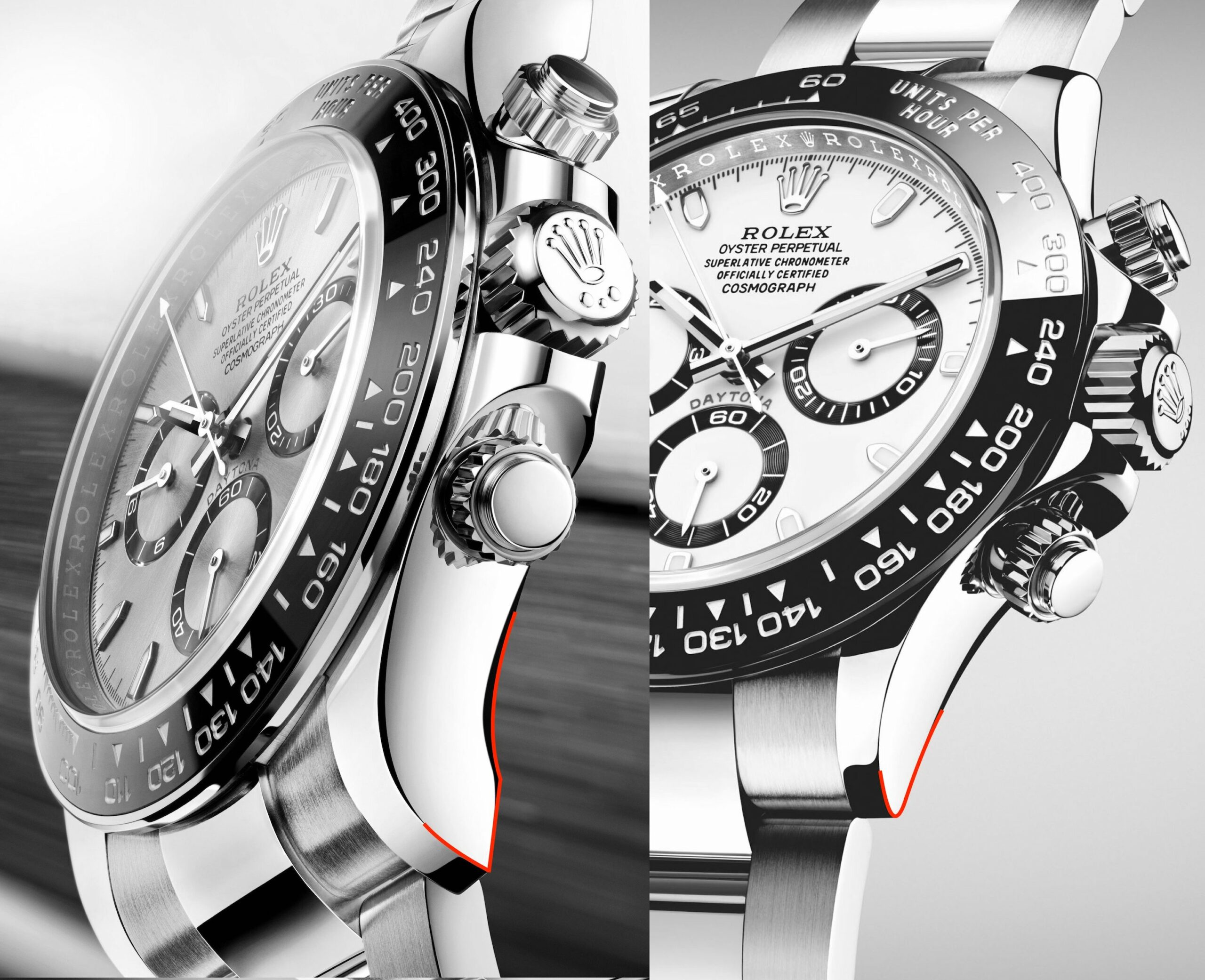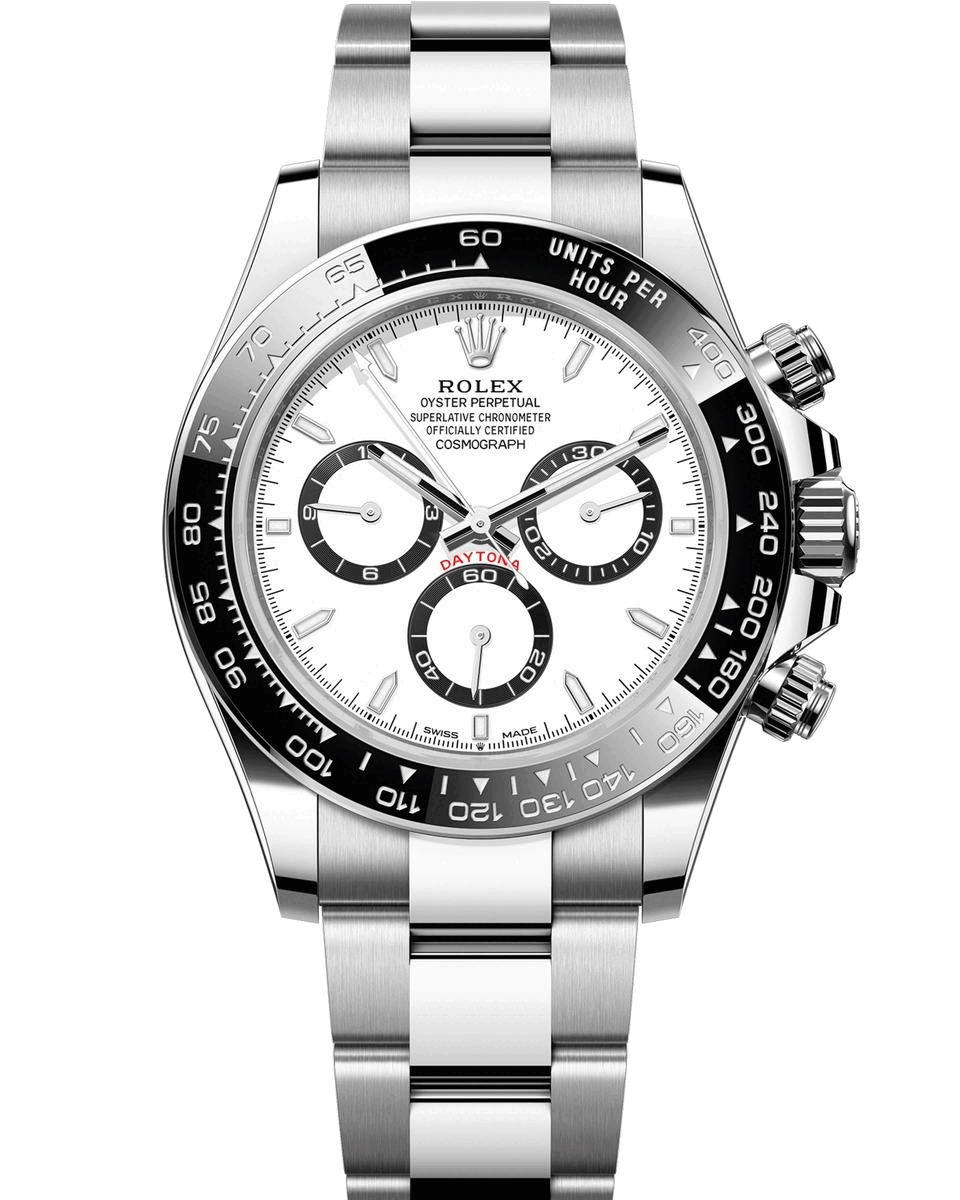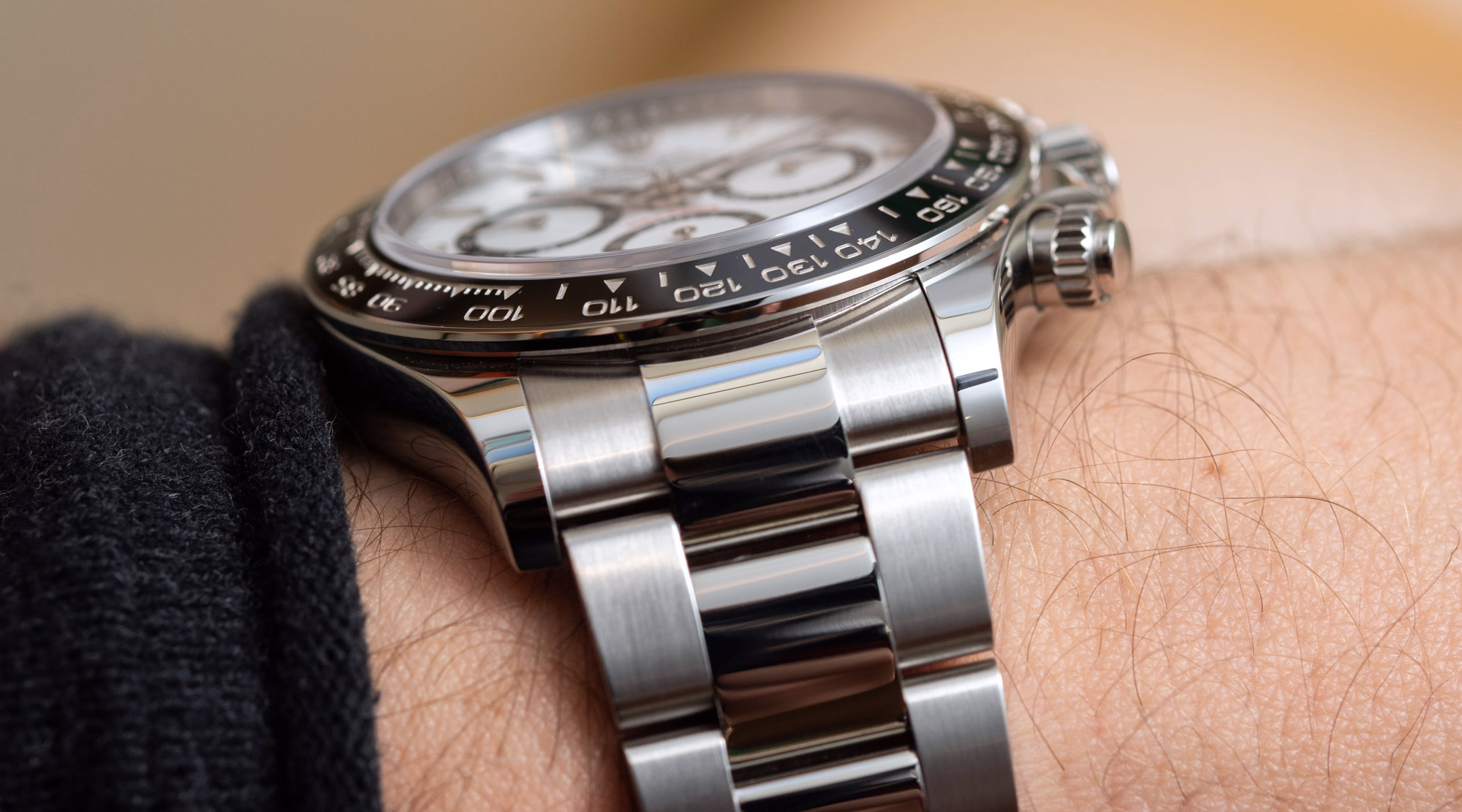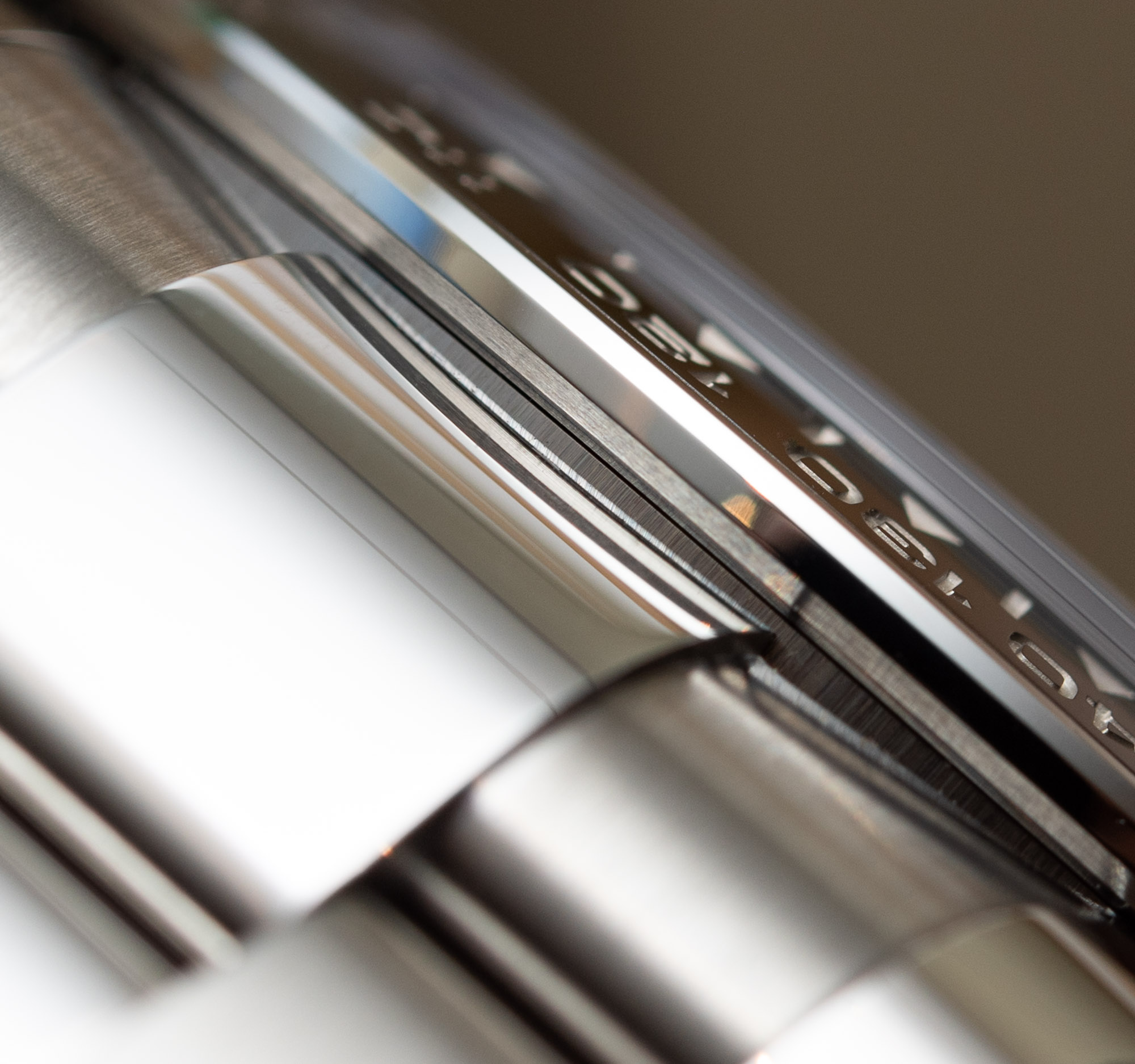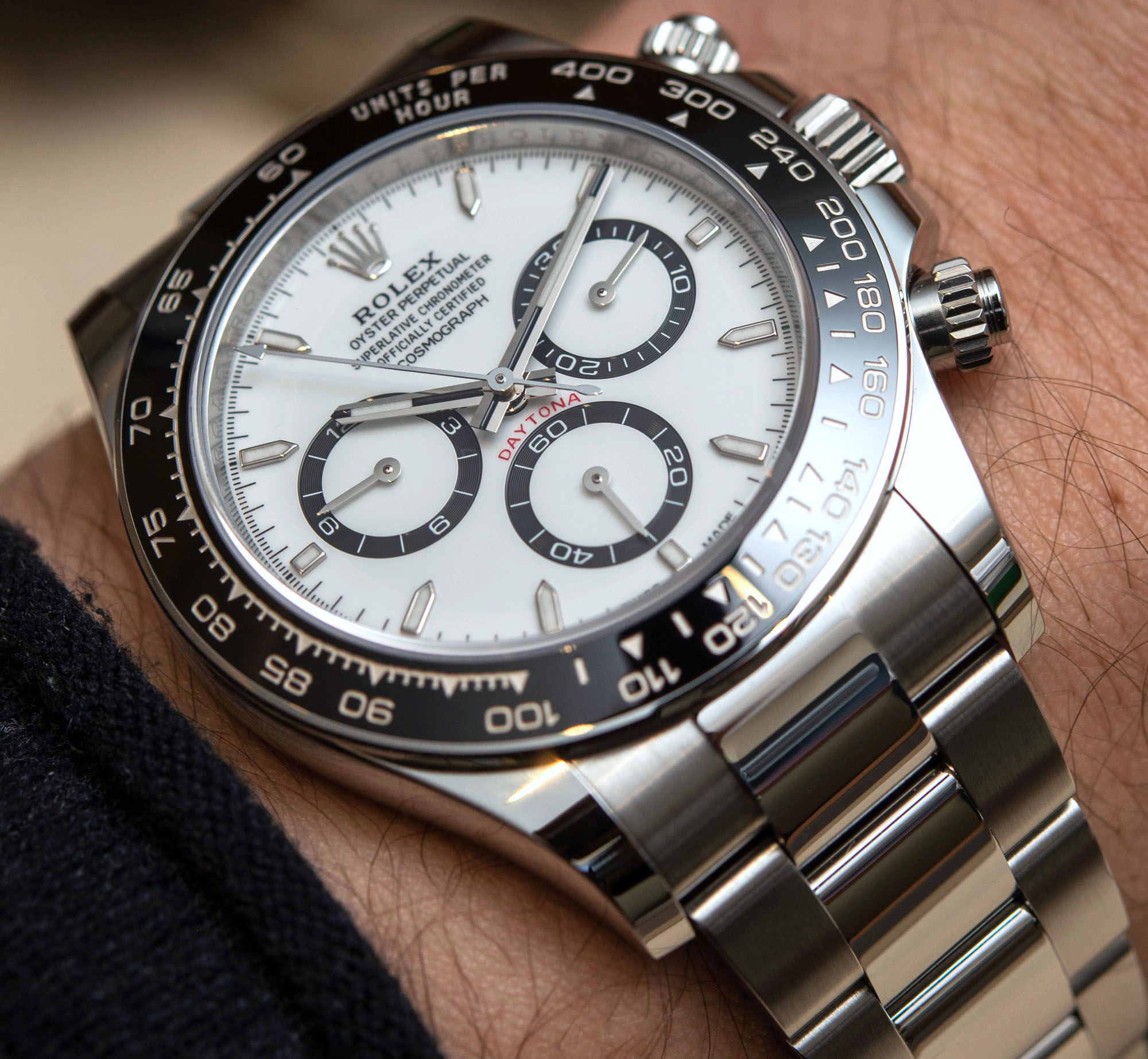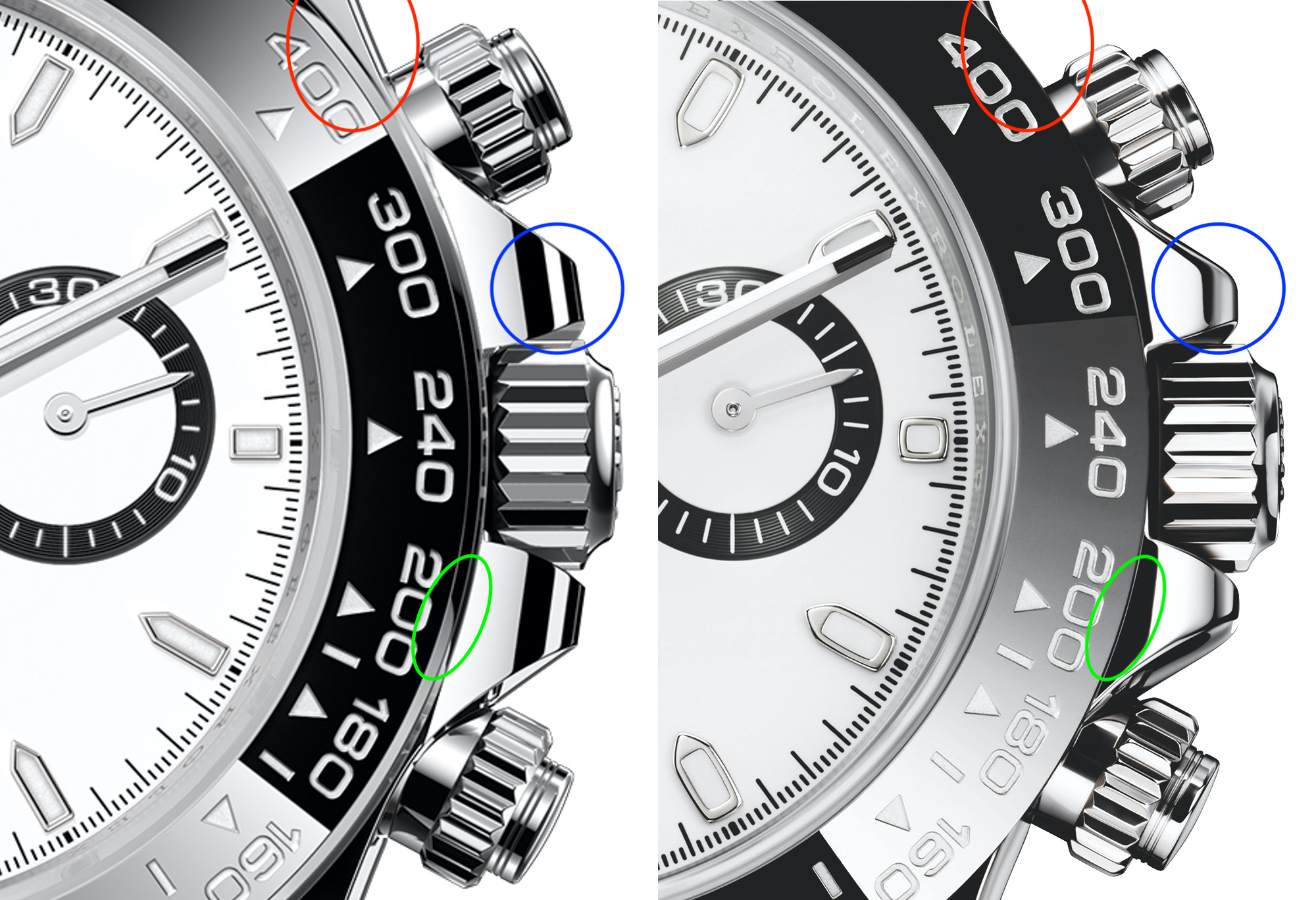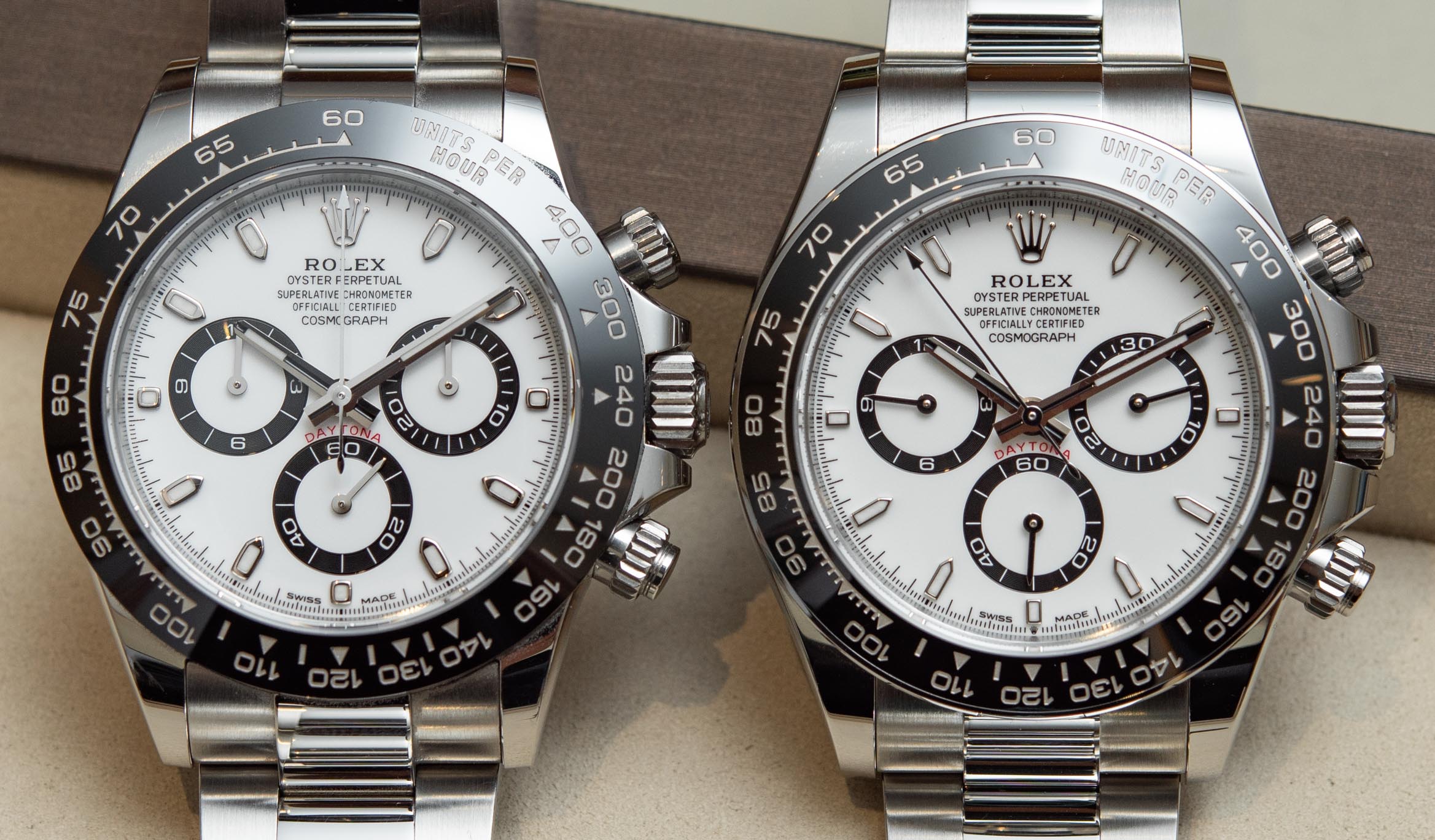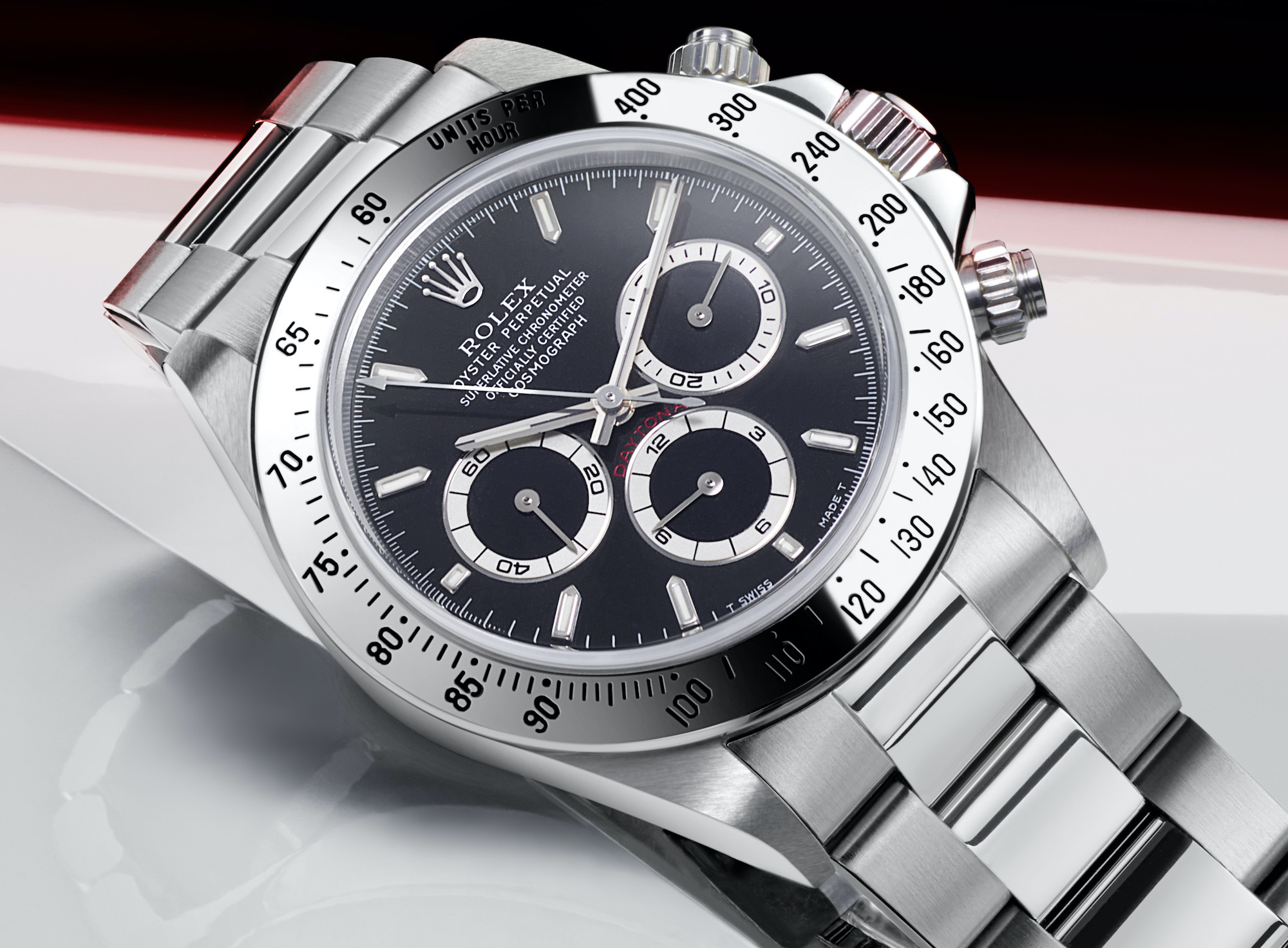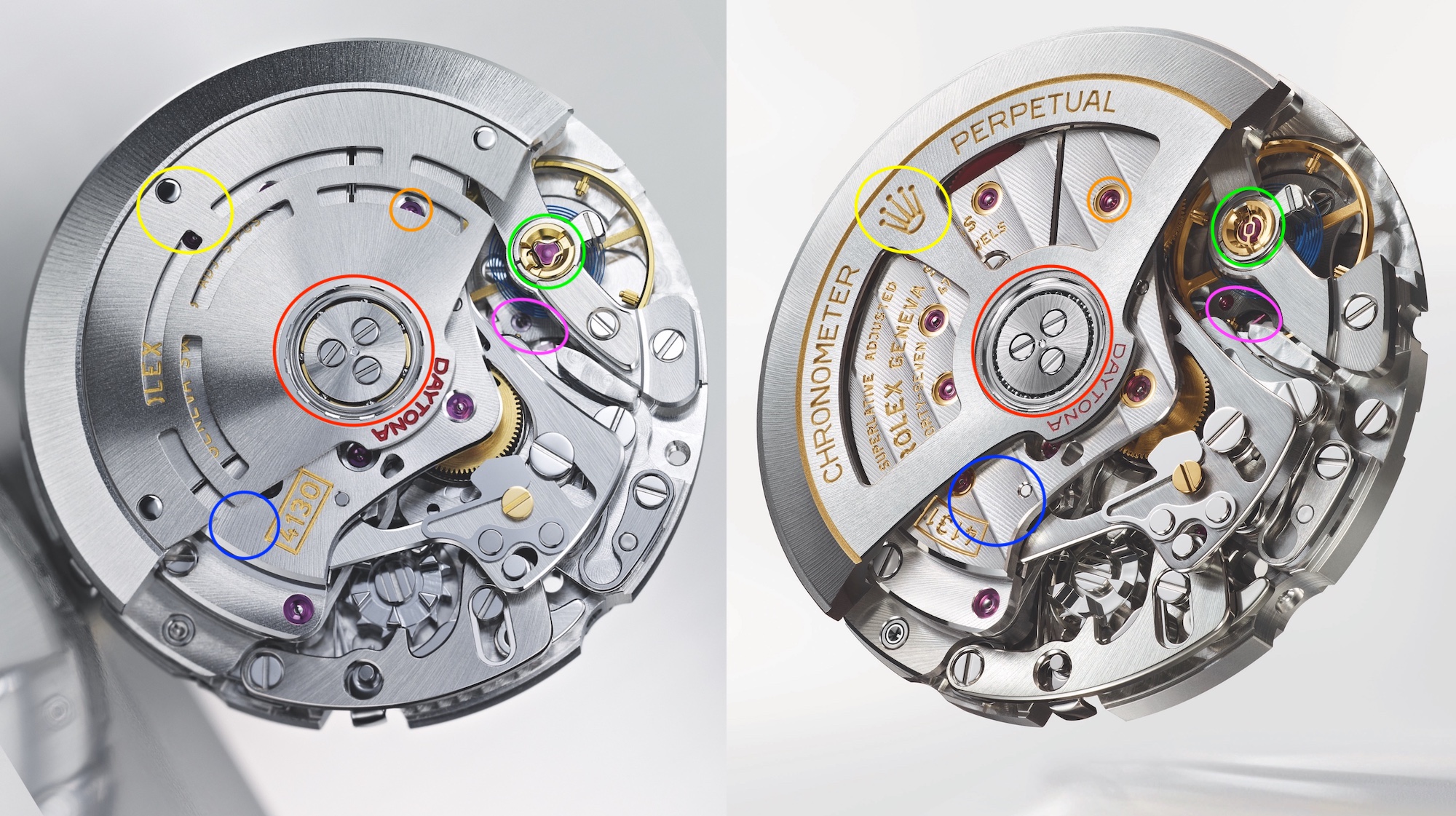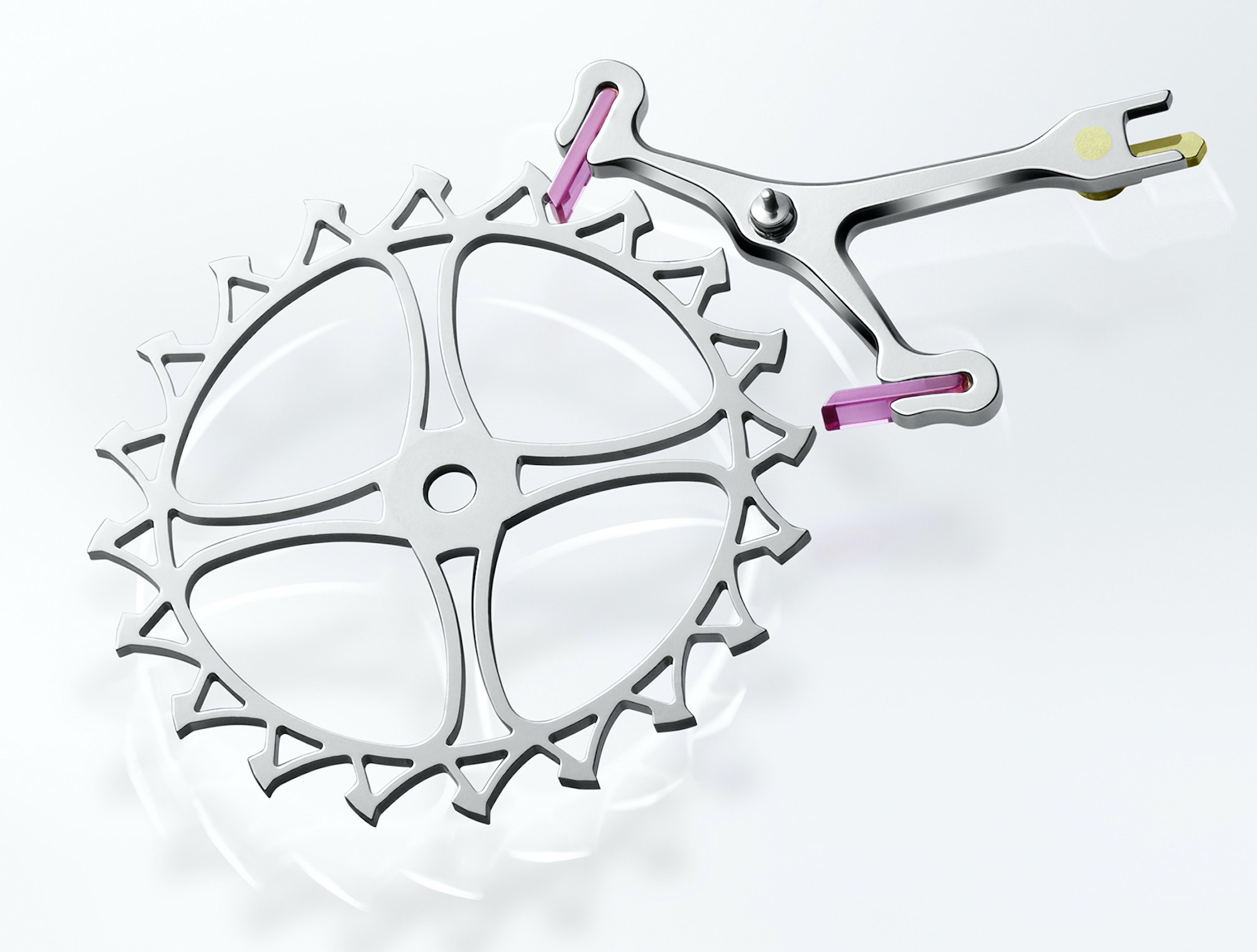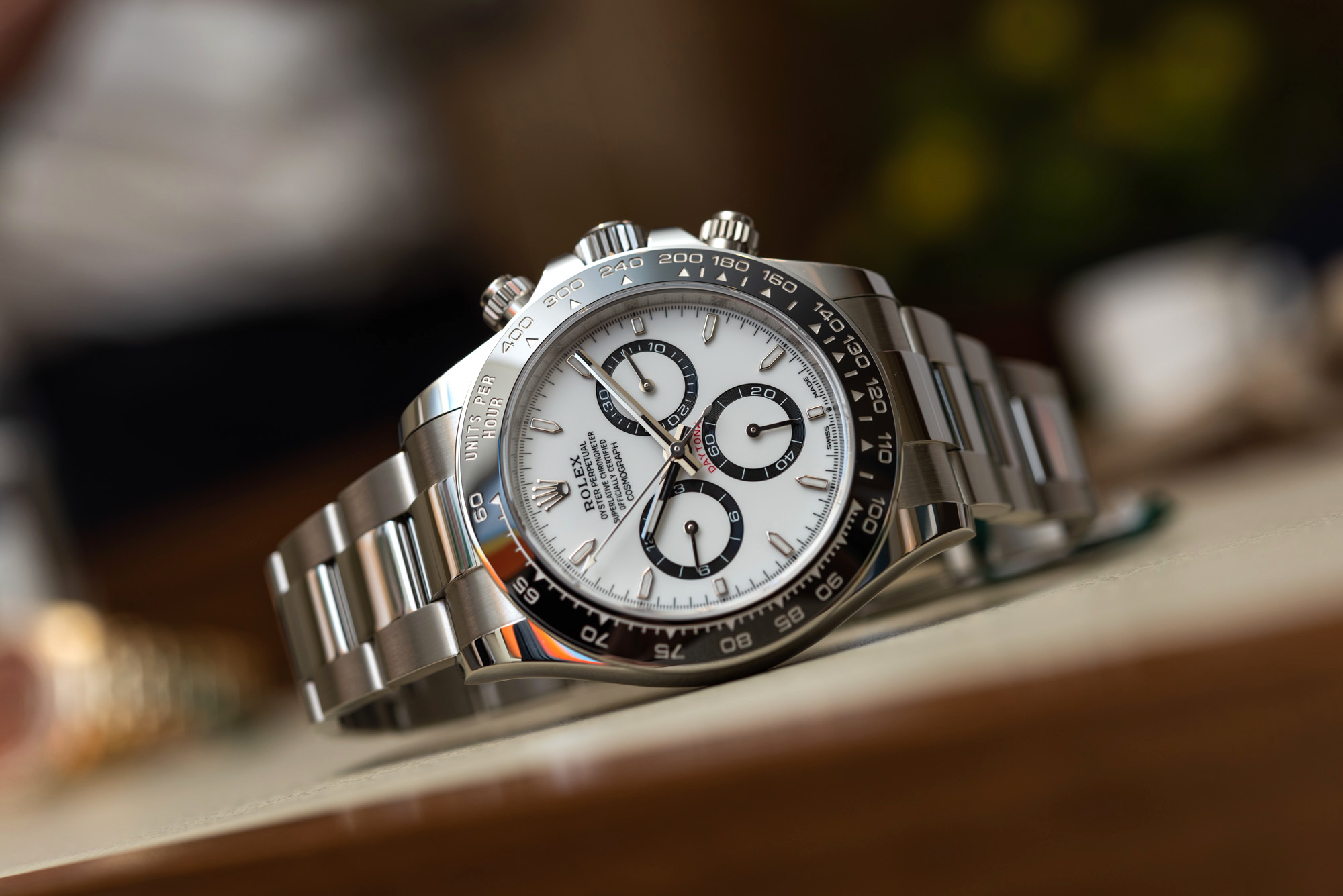The Definitive Guide To The 2023 Steel Rolex Daytona Watch Vs. Previous 116500LN Version
Fans of the Rolex Daytona will want to know exactly how the 2023 steel Rolex Daytona is different from the previous 116500LN version, i.e., what we can now call “the old Daytona.” This in-depth comparison will reveal the smallest nuances that make for a noticeably different impression on the wrist. The new Rolex Daytona is bigger, wider, and flashier on the outside, with a fresh dial covering up a movement re-engineered for the first time in almost a quarter of a century.
As much as some like to believe that the key ingredient to Rolex’s unrivaled popularity and success is hype, a big chunk of it actually comes from the long-term consistency of its collections, the ceaseless repetition of Rolex product names and design codes in the world around us, and the company’s strong self-restraint when timing and performing model updates. With all this in mind, it won’t come as much of a surprise that the 2023 Rolex Daytona watch in steel largely comprises small modifications — and very few, if any, major ones. For Rolex geeks, there is plenty of fascinating stuff going on, so let us now discover how the new Daytona is different from the old.
How The 2023 Steel Rolex Daytona Watch Case Is Different, Or Is This The “Super Case” Daytona?
The new steel Daytona is reference 126500LN, one up, if you like, from the waiting list and gray-market-favorite 116500LN that’s been with us since 2016. Here’s the first fascinating bit of Rolex Daytona watch trivia for you: On the steel-cased version, including the “two-tone” Daytona with a steel case and gold bezel, the case was actually asymmetrical. How so? The lugs on the left were designed to be wider than those on the right so as to offset the “visual weight” of the chronograph pushers, crown, and crown guards on the right side of the case. It’s something that once you have seen you will never unsee — but you probably won’t have noticed this until somebody pointed it out to you. The pointy, asymmetrical lugs stuck around until 2023 on the steel middle-cased Daytona watches, as well as on the 18k yellow gold Daytona with the 18k yellow gold bracelet. The thicker, symmetrical lugs were first introduced in 1993 on the leather strap-equipped 18k yellow gold Daytona and, with the aforementioned exception, these thicker lugs became the norm on the solid 18k gold and platinum-cased Daytona watches.
The next important difference, therefore, lay in the shape of the lugs. Until the 2023 update, steel Rolex Daytona watches and two-tone versions had pointy lugs (seen to the right in the image above), a little trait that has played an important role in the refinement and delicacy of the overall steel Daytona design. By contrast, the solid 18k gold and platinum-cased Daytonas had flat feet to their lugs, adding considerable heft and presence to them. For 2023, all Rolex Daytona watches, including steel and two-tone models, will have the flat lugs, i.e., the one you see to the left in the image above. We’ll add to this one last bit of trivia: Until 2023, precious metal Daytona models had wider case profiles. On steel, the bezel’s edge reached far beyond the profile of the case, whereas on precious metal versions, the case sides had more volume to them. Again, for 2023, all Daytona watches will have the same case style, whatever the material.
Those familiar with and appreciative of the carefully balanced proportions of the now-previous steel Rolex Daytona will find this update to the lug design one of the more impactful changes. On the wrist, this has made the Daytona a rather more “luggy” watch. Although not as severe as the “Maxi Case” or “Super Case” update that the GMT-Master II received in 2005, and the Submariner gradually between 2008 and 2010, it will nevertheless be a stand-out modification to the steel Daytona proportions for those who care about such things. For our subjective take on the entire redesign, read on.
Also new for 2023 is the metal frame around the Cerachrom bezel of the Rolex Daytona. This is another immediately noticeable update that affects every Daytona with a Cerachrom bezel — select gold Daytona watches will continue to have a single-piece 18k gold bezel. Rolex has confirmed to us that the bezel remains a monoblock Cerachrom ceramic piece within and is not a bezel insert like those on, say, the GMT-Master II. This decorative metal frame dates back to 1965 with the introduction of Oyster Daytonas. The same period included reference 6240/6241 — aka the Paul Newman Daytona. Rolex might have been inspired by the hype around the stupendous (and dubious) auction results of Paul Newman Daytonas, which could explain the return of this design element.
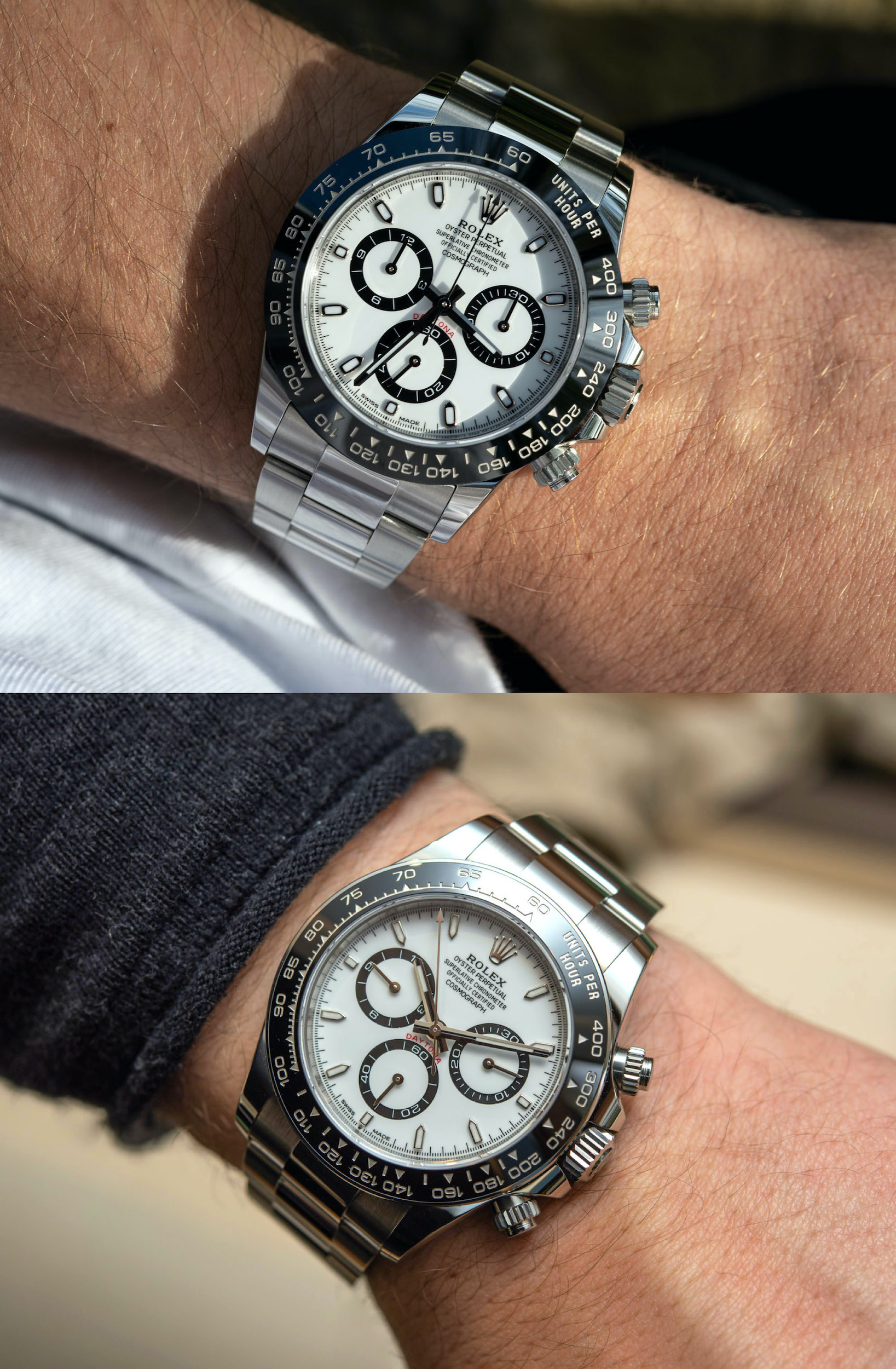
Same wrist, “same” Daytona: The new one (bottom) feels, looks, and measures larger, contrary to Rolex’s claims of both being “40mm.”
The 2023 Rolex Daytona is also wider, taking up noticeably more space on the wrist than its predecessor. Rolex, for whatever reason, prefers to oversimplify things and continues to call the Daytona a 40mm-wide watch. Well, the new Daytona wears larger, thanks, at least in part, to the wider and longer lugs, but also a larger case diameter. Between 8 and 2 o’clock, the diameter of the discontinued 116500LN is just 38.88mm — without pushers, as is customary to measure the diameter of a chronograph — whereas the new 126500LN is exactly 1mm wider at 39.88mm. Interestingly, the dial opening remained the same size which also plays its fair share in size perception. Sure, you have to have an eye for such nuanced updates, but there definitely is an increase in diameter.
This side-by-side comparison reveals some other notable changes on the 2023 Rolex Daytona in steel. The pointy crown guards that complemented the pointy lugs on the previous model are gone, in their place are more pronounced crown guards with an increased flat area (circled in blue), again, to go with the new lug design. A closer look at the upper pusher best reveals how much more pronounced and indeed wider the middle case is on the new Rolex Daytona 126500LN (circled in red). While on the now discontinued version the bezel formed sort of a roof over the middle case, reaching out and beyond the edge of the case itself, on the new version the wider lugs and larger crown guards have enough volume to stick out from under the bezel. Last, and circled in green, is the metal ring around the bezel we have already mentioned. With the beefier lugs, crown guards, and case profile, can we call this the “Super Case Daytona” — or “Maxi Case,” as some prefer to say?
How The 2023 Steel Rolex Daytona Watch Dial Is Different
Having quietly increased the case size, the dial had to follow, to keep proportions intact. The new Daytona dial features considerably slimmer subdial frames where the Arabic numerals fill their respective rings more fully. Another secret Daytona trait, the “mis-leveled” 3 and 9 o’clock subdials positioned slightly above the imaginary horizon between the 3 and 9 o’clock markers are of course here to stay, as is the red Daytona text above the 6 o’clock subdial. Although the subdials appear to have grown outwards in size, in fact, it is on the inside rim that Rolex shaved a few fractions of a millimeter off.

The sharper, narrower hour markers on the 2023 Rolex Daytona were inspired by the 1988 Rolex Daytona, pictured above.
Also new are the hour markers that are slimmer, longer, and more angular than before. Avid Daytona historians will spot that their “new” design actually harks back to that seen on the 1988 Rolex Daytona. For the time being, the steel Daytona remains available with the same two dial options, namely a black dial with silver colored subdials, and a white with black subdial frames nicked the Panda dial. The subdials have kept their concentric “snailed” pattern, as Rolex calls it, although this detail remains almost impossible to be appreciated with the naked eye, even with great near-sight vision. Unlike with some other model updates, Rolex has kept the color of the luminous “Chromalight display” unchanged at blue for the new Daytona. Likewise, the hands and hour markers are still in 18k white gold. Finally, Rolex has held onto the technically incorrect graduations on the chronograph seconds track. Around the periphery of the dial, in between the full second/minute markers, there are 4 lines, splitting each second into 5 parts — something that made sense when the Daytona had a 1/5th of a second movement in the 1960s but does not combine well with the 1/8th of a second movement the Daytona has had since 1988.
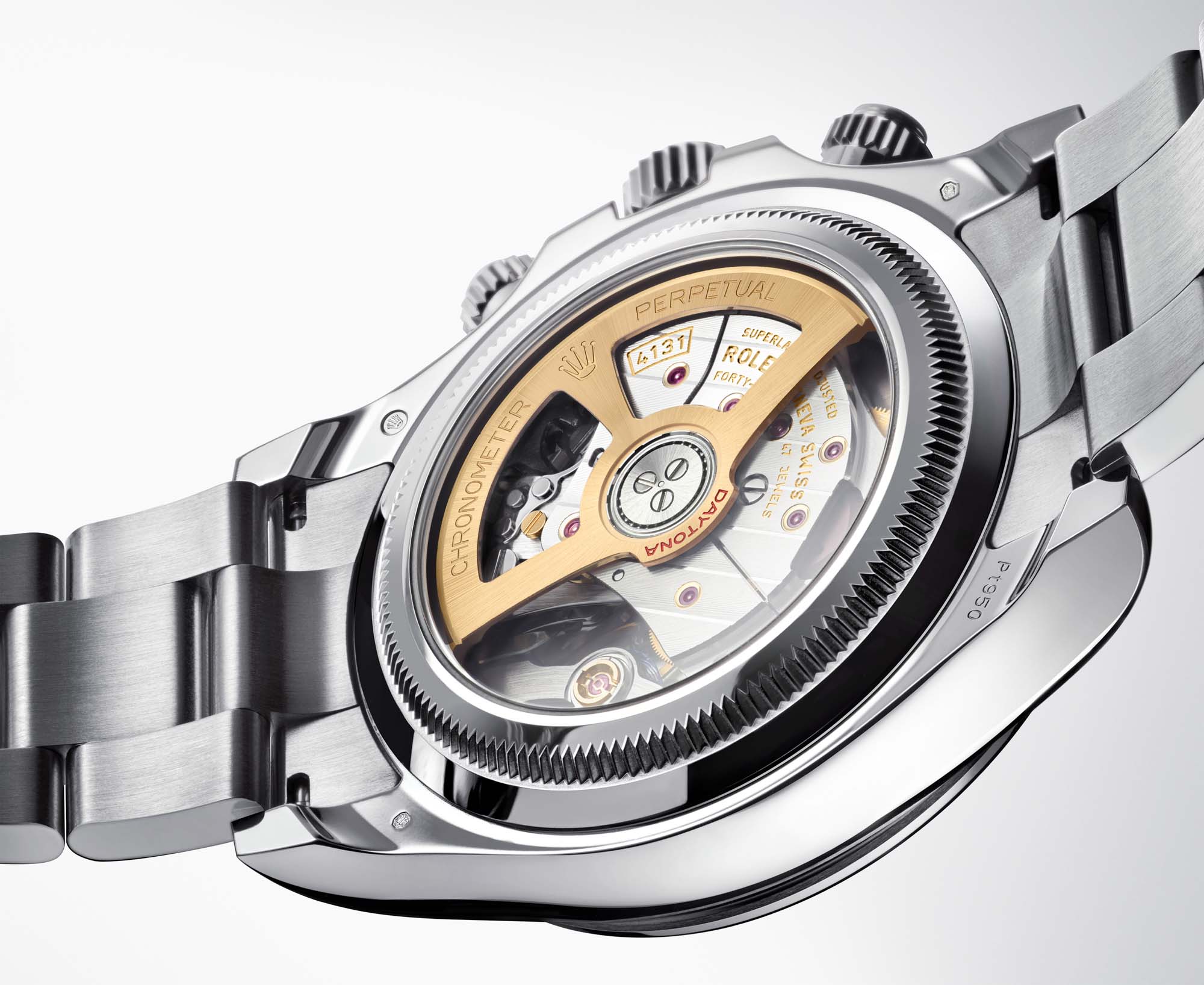
Don’t get too excited: Only the platinum Rolex Daytona will have a see-through caseback and a gold rotor.
How The 2023 Steel Rolex Daytona Watch Movement Is Different
The keen-eyed have certainly looked for the tiny crown to make its appearance below the 6 o’clock marker on the dial and indeed every 2023 Rolex Daytona watch sports that little detail to indicate the presence of a new-generation movement inside. The Rolex 4131 movement marks the first publicized update to the 4130, the highly acclaimed self-winding chronograph movement that Rolex designed, developed, and has been producing since 2000; although over the years some small, unpublicized updates have been implemented in the 4130. The new Rolex caliber 4131 remains hidden by a solid caseback on all Rolex Daytona watches other than the platinum Daytona.
Here are the specific differences between the Rolex 4130 and Rolex 4131 movements — and there are plenty. The Perpetual self-winding system of the 4131 uses over twice as many ball bearings (red circle), so as to provide greater durability and an even smoother operation to automatic winding action. To be fair, the 4130-equipped Daytona is among the quietest chronographs out there, it’s virtually impossible to hear the rotor’s movement, even when provoked by a vicious shaking of the watch. Circled in green is the Paraflex shock absorber, a potential upgrade from the KIF shock absorber on the 4130. Hidden in the bowels of the movement and circled in purple is the Chronergy escapement, Rolex’s high-efficiency escapement. You can learn more about the Chronergy escapement in stunning detail from SJX here. The remaining changes focus on the aesthetics of Rolex’s chronograph movement: The new 4131 caliber has received the Rolex Côtes de Genève striping (marked in blue), a considerable improvement over the curved brushed finish on the 4130. Rolex has made the Genevan stripes its own by adding a polished groove between the stripes. Last, the jewels now have a golden chaton (orange), and the rotor is opened up now to reveal more of the movement and sports the Rolex crown and the Chronometer Perpetual text (marked in yellow) — albeit, inexplicably, all of them the wrong way up.
Despite the addition of the highly efficient Rolex Chronergy escapement, the brand makes no claims to any improvements in the performance of the 2023 Rolex Daytona. Power reserve is still quoted at “approximately 72 hours,” and the new Daytona is regulated to perform with the extremely strict timekeeping tolerances that apply to every Rolex watch currently produced, which is -2/+2 seconds per day. That said, the improved efficiency of the escapement might help the Daytona have its only complication, the chronograph function more accurately throughout the power reserve and/or the power reserve will be affected less now if the chronograph is kept running the whole time.
Rolex hardly ever updates the aesthetics of its movements, yet it has done exactly that in an all-encompassing manner with the 2023 Rolex Daytona and its 4131 caliber. Although see-through casebacks are exclusive to the platinum Daytona and the new 1908 collection of Rolex dress watches for now, developing prettier movements (at long last) might just be Rolex setting itself up to soon allow a wider range of customers to appreciate this essential component of their mighty expensive new watch.
In Closing, Our Subjective Analysis Of The 2023 Steel Rolex Daytona
Whereas Rolex claims to be all about the perpetual pursuit of excellence — a mission statement reflected by its unrivaled selection and quantity of remarkably high-performance movements, among other things — occasionally not even “The Crown” can escape the pressure of doing something just for the sake of doing it. With the 2016 debut of the steel Rolex Daytona 116500LN, perhaps not even Rolex knew what a challenge it would eventually be to try to improve upon that design and execution. Seven years later, the 60th anniversary of the collection has marked the time for that “something” to happen, and so Rolex was expected to face this trial head-on and somehow modify one of its finest-ever designs — the 116500LN steel Daytona.
Even with all this in mind, we have to say that many of the updates to the Daytona, and especially the steel Daytona, appear to be hard-to-justify modifications that represent more of a step back than forward. The asymmetrical design, the delicate shape of the lugs, case profile, and hour markers, the monoblock and unframed ceramic bezel, the perfect overall proportions of the steel Daytona — not one of these are watch design elements that happen by chance, not at this level, anyway. And yet, all of these deliberate and calculated elements of refinement have been undone without any historical or practical justification.
We’ll end this segment here. Suffice it to say that we prefer the lug design, delicate case profile, cunning asymmetry, and, above all, the overall proportions of the 116500LN. But what about you? Let us know in the comments below. The 2023 steel Rolex Daytona watch 126500LN is priced at $15,100 — up from the last known price of $14,550 for the previous model. Oh, and if you still have an appetite for Rolex Daytona reading material, check out our Five Ways The Rolex Daytona Is A Better (And Worse) Watch Than You Might Expect feature article here. Last, you can learn more on the brand’s website.

